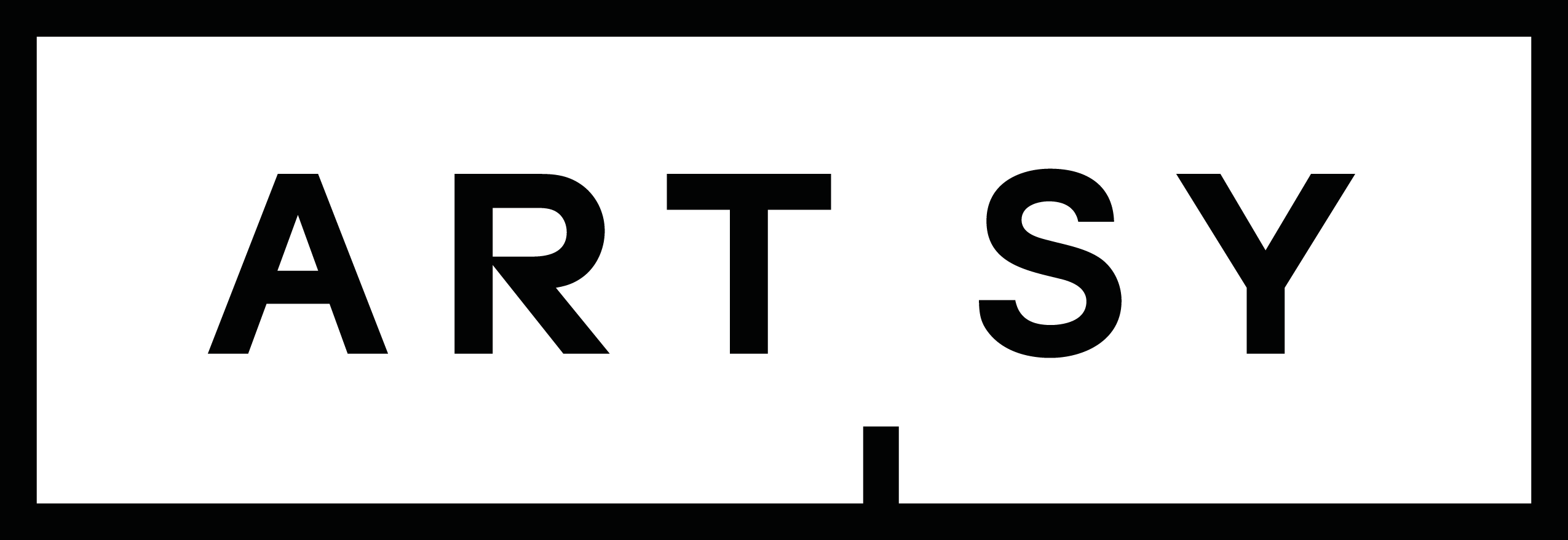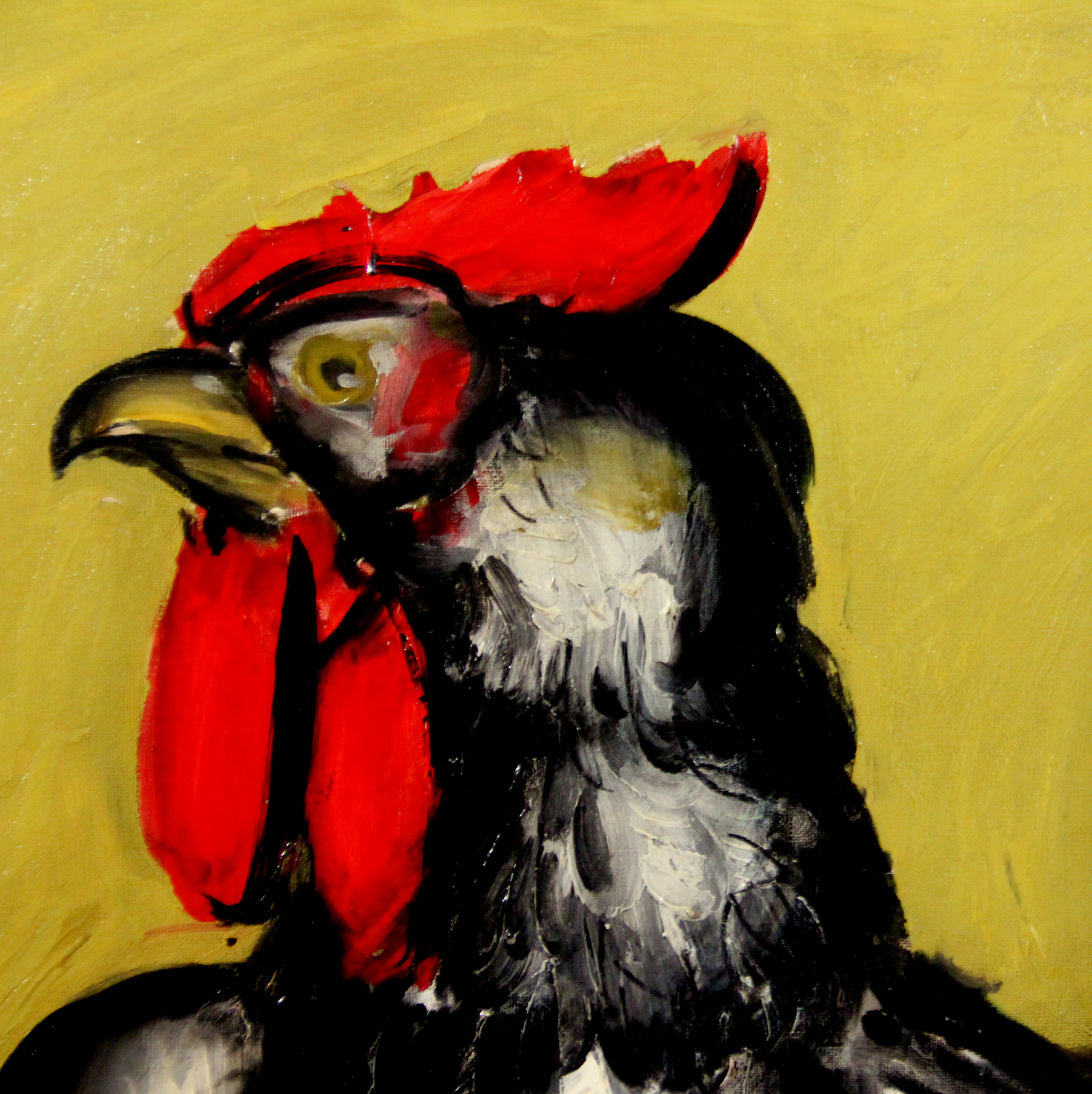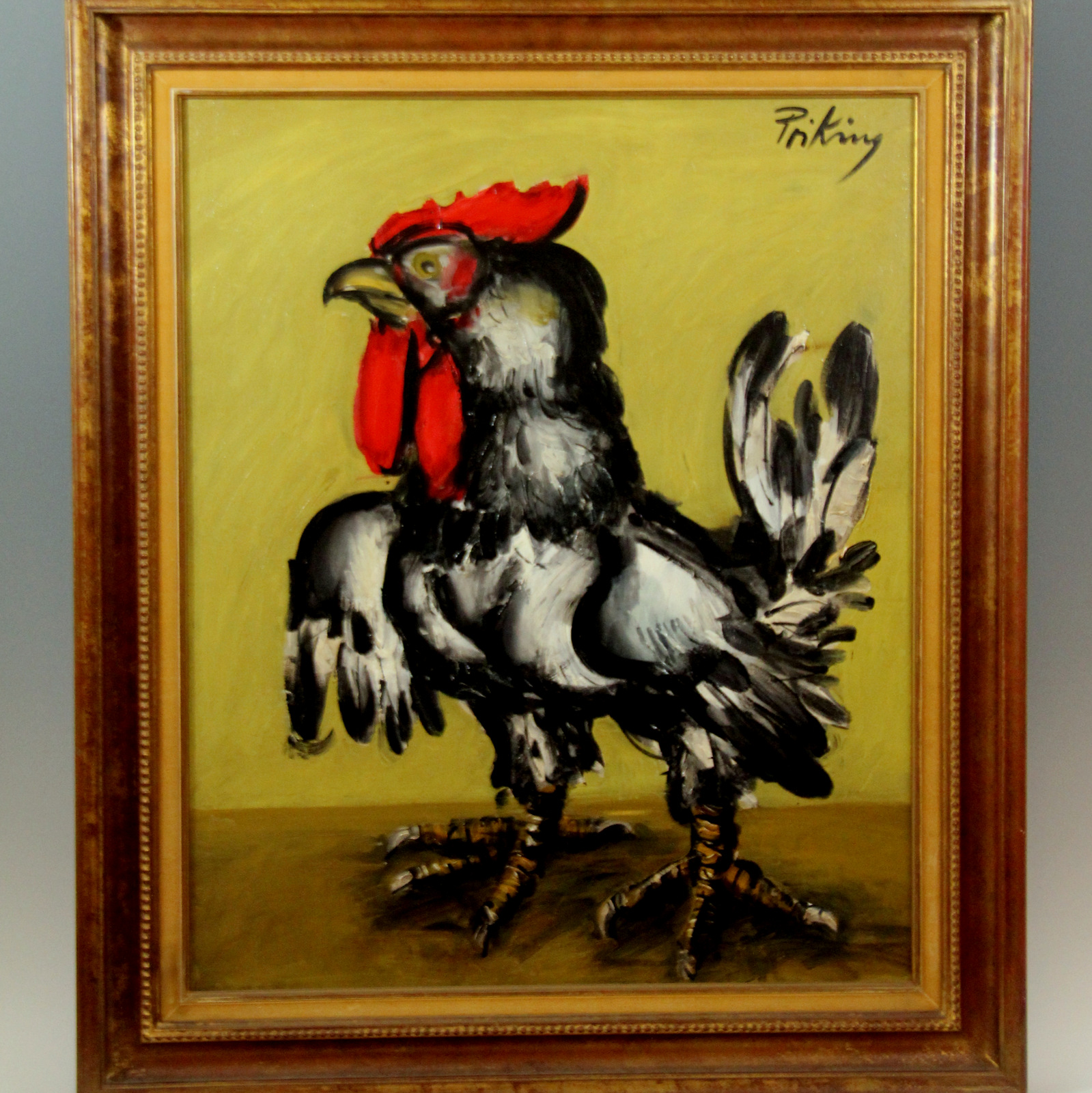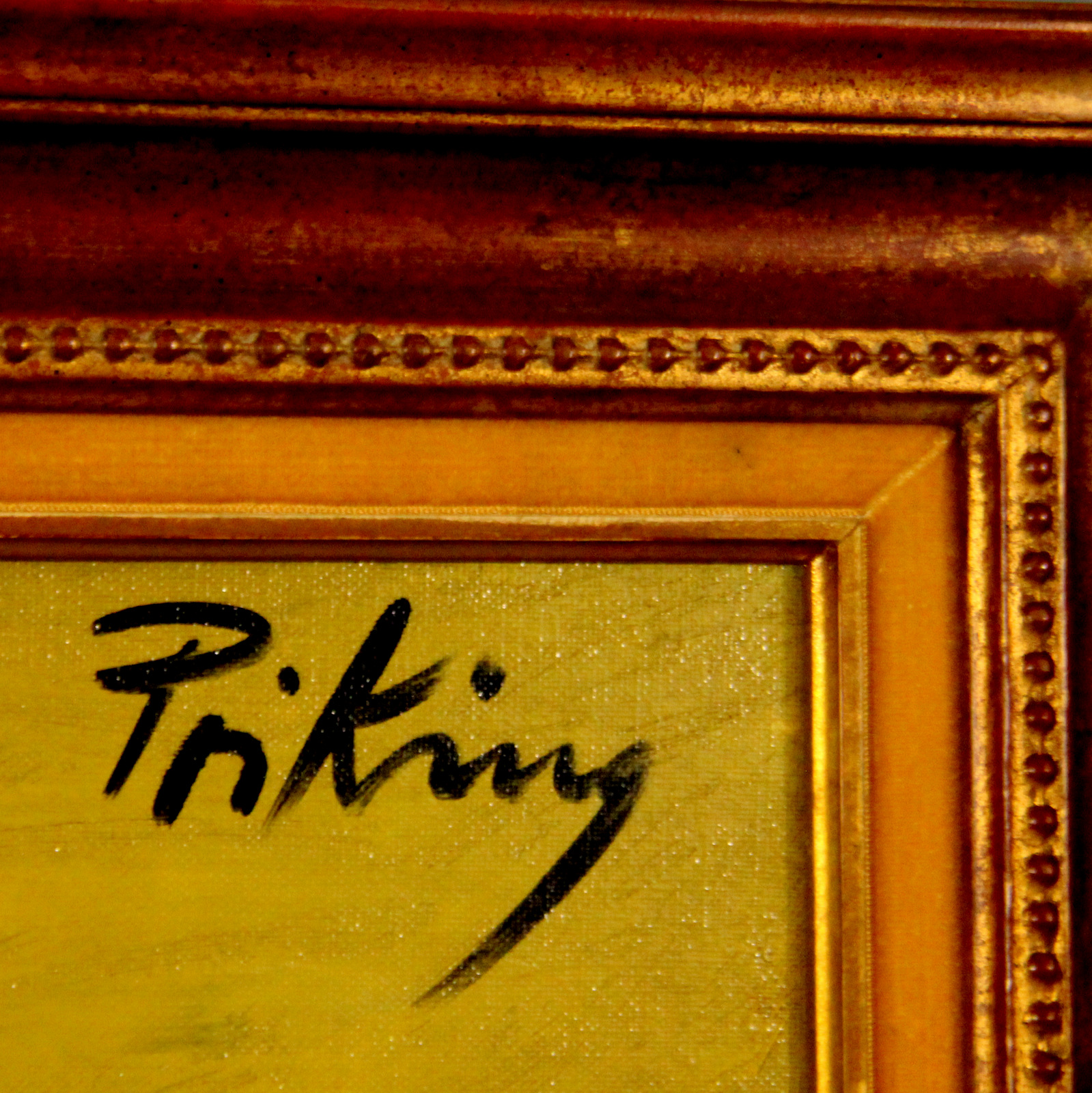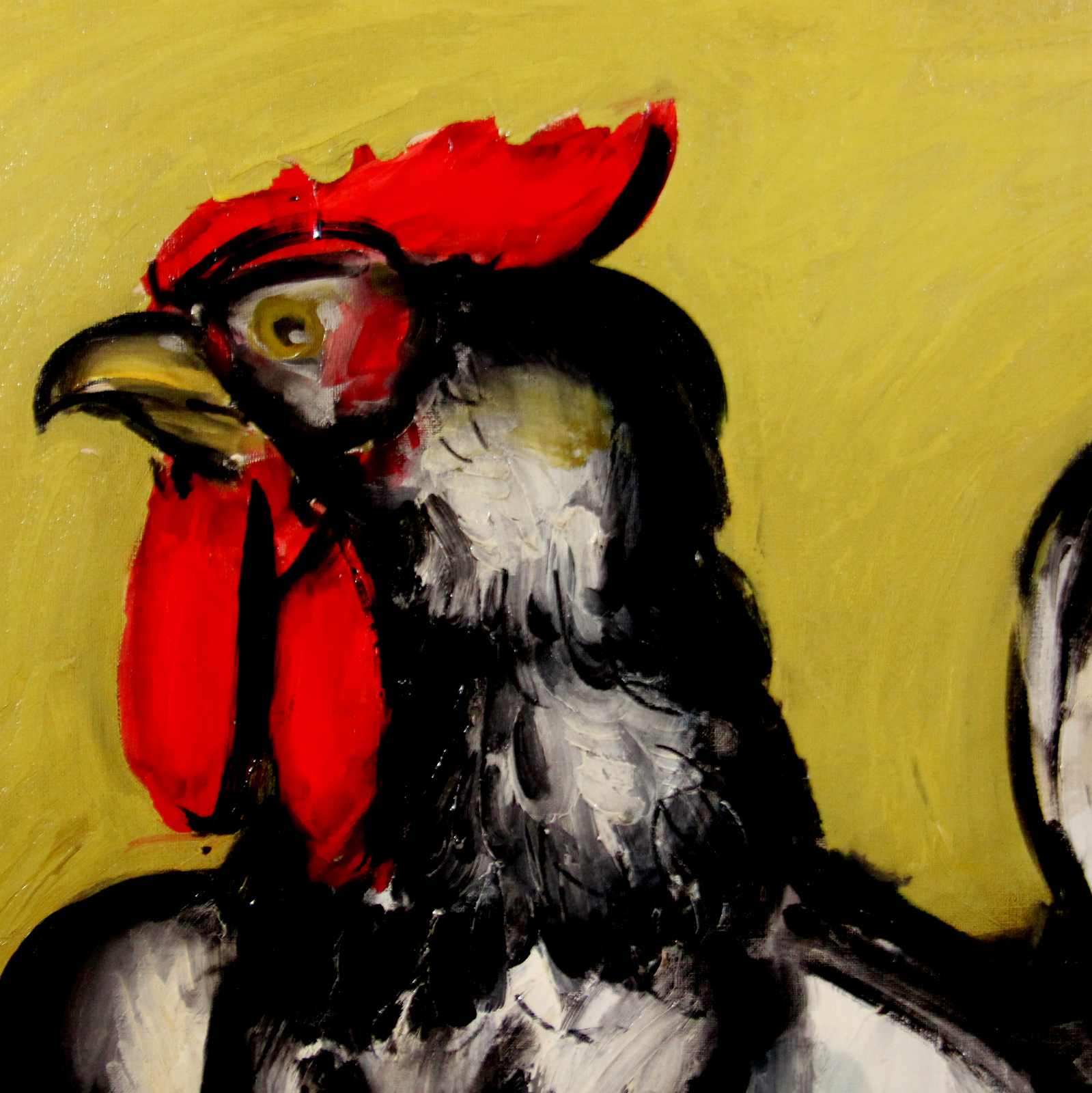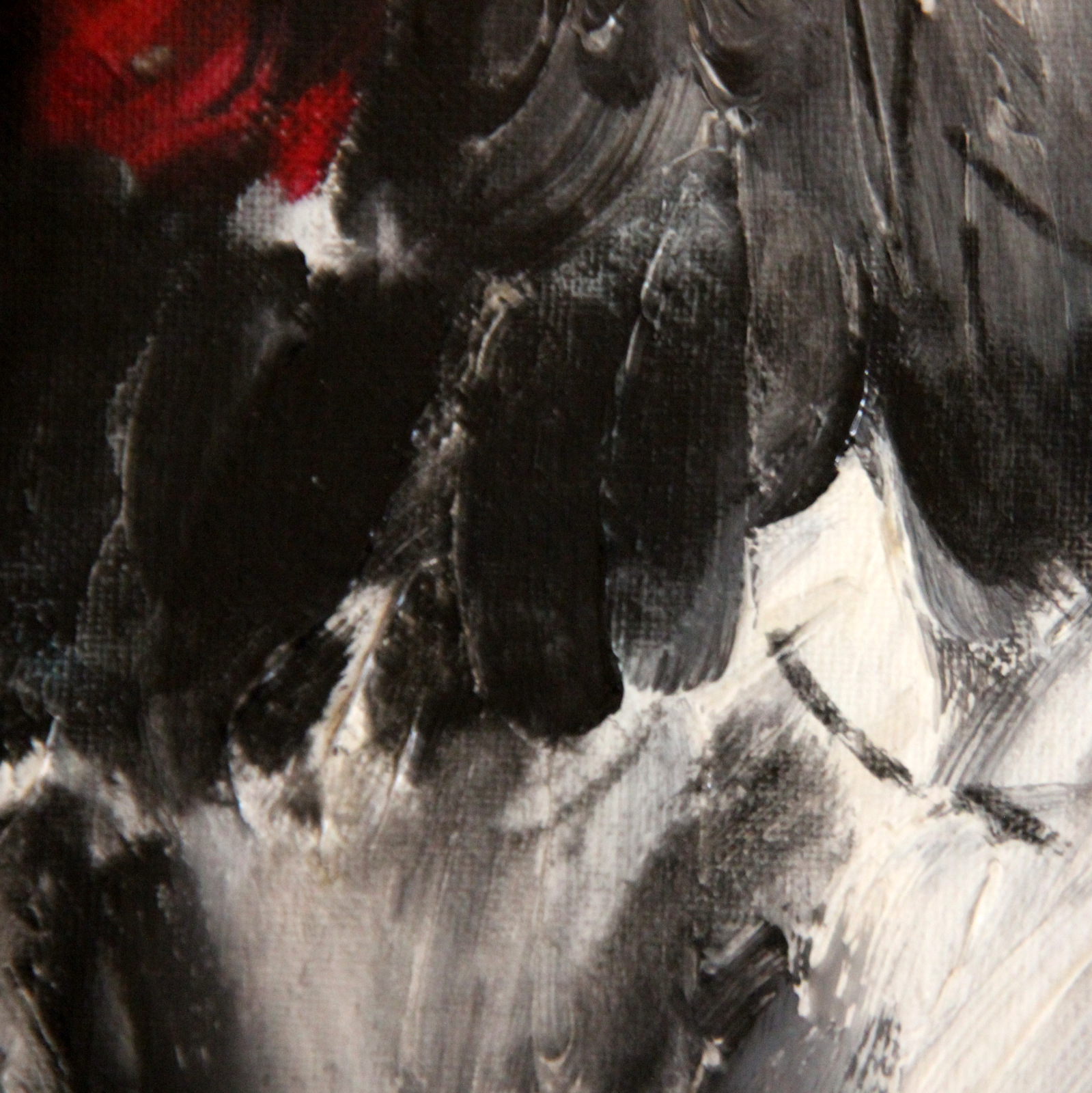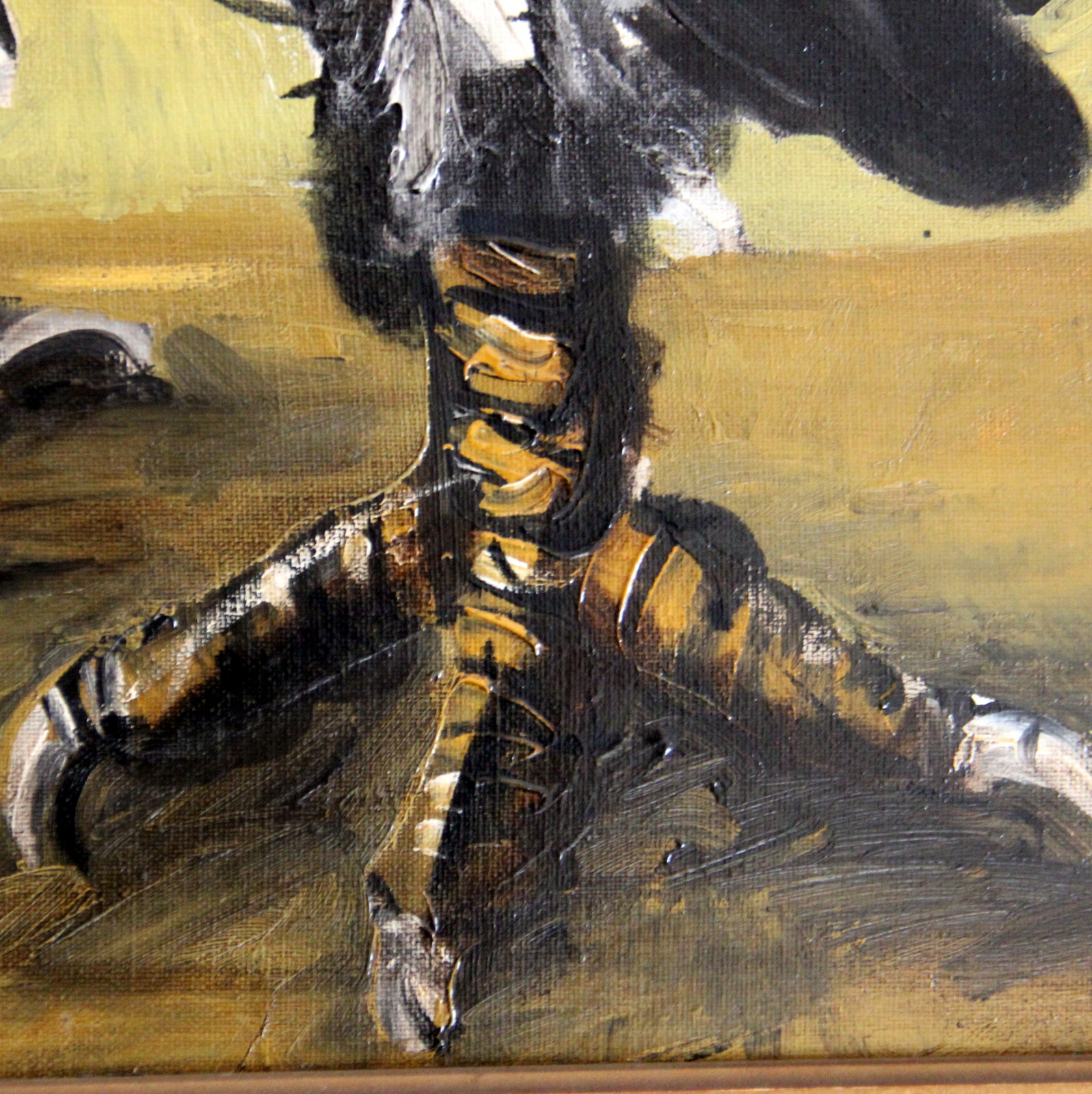Franz Priking (1929-1979) ◊ The rooster ◊ Oil painting
6000,00€
Oil painting on canvas
Signed top right
Height 73 cm x Length 60 cm
Frame in molded wood and gilded 1950s
Very good state
Description
He is the « Germanic Bernard Buffet”, less media and yet tragic… Born in Mülheim in the North Rhine in 1929, the war will mark forever his childhood and adolescence. After being enlisted by force by the Nazis in 1944 and imprisoned in Russia and then in Auschwitch, young Franz, already passionate about art, escapes, crosses the country and, a year later, discovers Expressionism. In 1948, he went to study at the Bauhaus in Weimar, then at the Berlin Academy of Fine Arts in the studio of Max Pechstein, one of the founders of the Die Brücke movement ; became friends with Bertold Brecht, who introduced him to Socialist Realism. Then, it is Paris, before going down into the South of France, in the sun. He met Picasso and worked for eight months with “Le Maitre », who confined to him: “you will be one of the best painters of your generation”… From then on, he paints a lot and trustees prices and exhibitions. In the early 1960s, he moved to Oppède in the Lubéron, where he died prematurely at the age of 49. His painting does not deform reality, but intensifies it. His fresh and pathetic look nourishes a style of great intimate tension. Spontaneous, concise, nervous, its serious style of design emphasizes with black outlines its glacis, worthy of the Flemish school. The paste, always generous, is laid with mastery. Strict vitality of the subject. Like this rooster, animal theme rarely treated in his work, illustrating all the mastered interior power of this incontestable artist. In 1958 he was awarded the Prix de la Jeune Peinture in Paris, in 1961 he was elected a member of the International Institute of Arts and Letters in Geneva. Nothing less than 37 American museums possess and exhibit his works, as well as those of the Vatican in Rome, Modern Art of Paris, Calvet in Avignon and Santiago de Chile.


